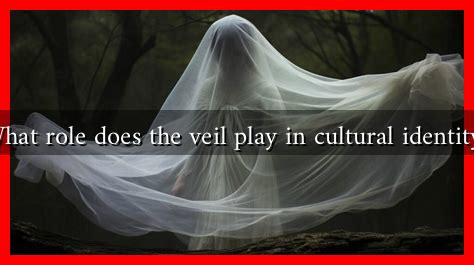-
Table of Contents
What Role Does the Veil Play in Cultural Identity?
The veil, often associated with various religious and cultural practices, serves as a powerful symbol of identity for many individuals and communities around the world. Its significance transcends mere fabric; it embodies beliefs, traditions, and social values. This article explores the multifaceted role of the veil in cultural identity, examining its implications in different contexts and its impact on personal and collective identities.
The Veil as a Symbol of Faith
For many women, particularly in Islamic cultures, the veil is a profound expression of faith. It is often seen as a commandment from God, representing modesty and piety. The Quran mentions the concept of hijab, which has been interpreted in various ways across different cultures. The veil can take many forms, including:
- Hijab: A general term for modest dress, often covering the hair.
- Niqab: A face-covering veil that leaves only the eyes visible.
- Burqa: A full-body covering that includes a mesh screen over the eyes.
In countries like Saudi Arabia and Iran, wearing the veil is mandated by law, while in others, it is a personal choice. For instance, a study by the Pew Research Center found that 62% of Muslim women in Indonesia wear the hijab, reflecting a cultural embrace of this practice as part of their identity. In contrast, in Turkey, the hijab was historically banned in public institutions, highlighting the complex interplay between secularism and religious expression.
The Veil and Feminism: A Double-Edged Sword
The veil often sparks debates within feminist circles. Some view it as a symbol of oppression, while others see it as a form of empowerment. This dichotomy can be illustrated through various perspectives:
- Oppression: Critics argue that the veil is a tool of patriarchal control, limiting women’s freedom and autonomy.
- Empowerment: Proponents assert that wearing the veil can be a conscious choice that allows women to reclaim their bodies and identities.
For example, in Western societies, the veil has been a focal point in discussions about multiculturalism and integration. In France, the 2004 law banning conspicuous religious symbols in schools was justified by the government as a means to promote secularism. However, many Muslim women viewed it as an infringement on their personal freedoms and cultural identity. This tension illustrates how the veil can be both a source of pride and a point of contention.
The Veil in Global Contexts
The significance of the veil varies widely across cultures and regions. In some African cultures, the veil is worn during ceremonies and celebrations, symbolizing cultural heritage and community belonging. For instance, in Nigeria, the gele (a traditional headwrap) is often worn during weddings and significant events, serving as a marker of ethnic identity.
Moreover, the veil has also been adopted in fashion and popular culture, transcending its traditional meanings. Designers like Dolce & Gabbana and Jean Paul Gaultier have incorporated veils into their collections, showcasing them as symbols of elegance and sophistication. This commercialization raises questions about authenticity and cultural appropriation, as the veil’s original meanings may be diluted in the fashion industry.
Conclusion: The Veil as a Complex Symbol
The veil plays a multifaceted role in cultural identity, serving as a symbol of faith, empowerment, and cultural heritage. Its significance varies across different contexts, reflecting the complexities of individual and collective identities. As societies continue to grapple with issues of multiculturalism, feminism, and globalization, the veil remains a potent symbol that invites dialogue and understanding.
In summary, the veil is not merely a piece of clothing; it is a rich tapestry woven with threads of faith, culture, and personal choice. Understanding its role in cultural identity requires a nuanced approach that respects individual experiences while acknowledging broader societal implications. As we navigate an increasingly interconnected world, recognizing the diverse meanings of the veil can foster greater empathy and appreciation for cultural differences.
For further reading on the topic, you can explore resources from the Pew Research Center and various academic journals that delve into the intersections of culture, religion, and identity.



